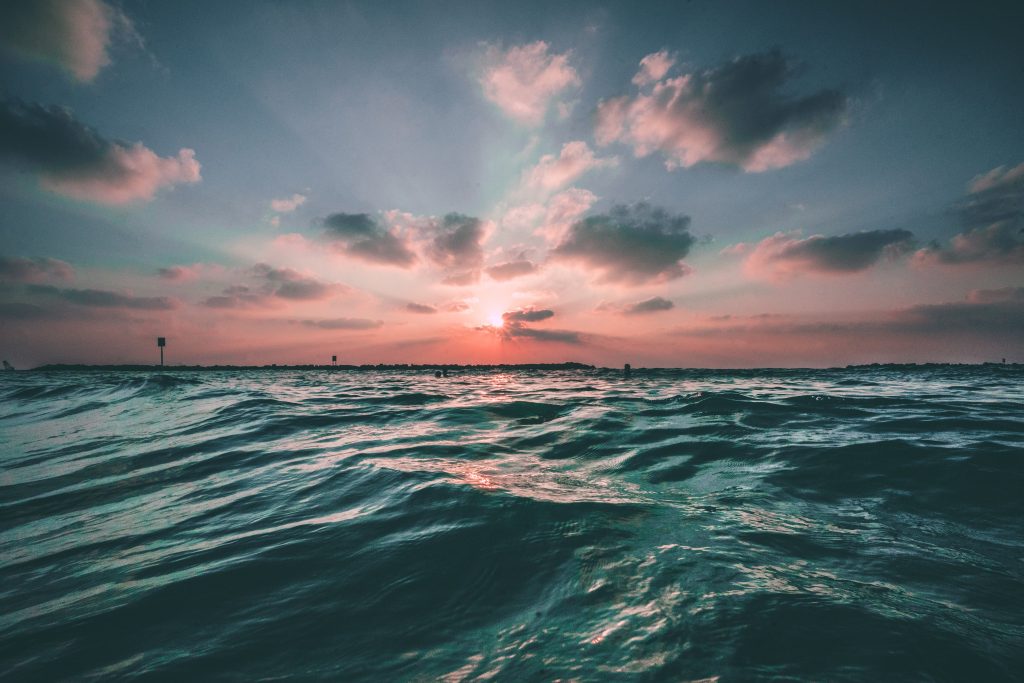Resources > Our Business
Ocean-Based Climate Solutions: The Emerging Technologies and Practices for Blue Carbon Sequestration

The Earth’s climate is changing rapidly, and the effects of climate change are becoming more visible every day. From rising sea levels to more frequent natural disasters, it’s clear that we need to take action to mitigate the effects of climate change. One promising solution is blue carbon sequestration, which refers to the process of capturing and storing carbon dioxide in coastal and marine ecosystems.
What is Blue Carbon?
Blue carbon refers to the carbon that is stored in coastal ecosystems. Coastal ecosystems like mangroves, seagrasses, and salt marshes are incredibly effective at sequestering carbon from the atmosphere and storing it in the soil. These ecosystems are often called “blue carbon sinks” because they act like a sink, or storage area, for carbon.
Carbon’s Double-Edged Sword: The Critical Importance and Vulnerability of Blue Carbon Sequestration
Coastal blue carbon ecosystems are incredibly important, yet unfortunately they are among the most threatened ecosystems on the planet. In fact, these ecosystems are being degraded or destroyed at a rate four times faster than that of tropical forests, and the effects of climate change are only exacerbating these losses.
The degradation of coastal ecosystems can be attributed to a variety of causes, including mangrove forest exploitation, coastal development for urban and industrial purposes, pollution, and pressures from agriculture and aquaculture. Unfortunately, the high carbon content of blue carbon ecosystems means that they can turn into significant sources of greenhouse gas emissions when they become degraded or lost. The ocean accounts for the circulation of 83% of the global carbon cycle. And in fact, ongoing carbon losses from blue carbon ecosystems are estimated to contribute up to 19% of emissions from global deforestation.

According to the United Nations Environment Programme (UNEP), coastal ecosystems such as mangroves, seagrass beds, and salt marshes can sequester up to five times more carbon per hectare than tropical forests on land.
Blue Carbon Sequestration to Combat Climate Change
In the past few years, the utilization of fossil fuels in transportation, industry, and agriculture has led to the release of high levels of pollutants such as CO2, NOx, and PM, causing severe environmental pollution and climate change. This has been exemplified by the COVID-19 pandemic. Consequently, it is crucial to explore efficient and effective solutions that involve technology, management, and policy. Among these solutions, the transition to renewable energy sources is considered one of the most promising approaches for reducing environmental pollution and mitigating climate change. Renewable sources such as wind, solar, ocean, hydropower, biomass, and biofuels are widely available, biodegradable, and non-toxic. Furthermore, natural ecosystem development is also a vital solution, as natural ecosystems can sequester significant amounts of carbon emissions. Blue carbon, which is a natural ecosystem, has garnered global attention for its potential role in mitigating carbon dioxide emissions.
There has been a growing appreciation of the crucial role played by “Blue Carbon” in addressing climate change. Thus far, various initiatives have been successful in generating co-benefits like coastal conservation and aquaculture, resulting in international recognition. Blue carbon has not only captured the attention of the scientific community but has also raised awareness among different stakeholders, including governmental and non-governmental organizations responsible for safeguarding marine ecosystems and curbing climate change.
Some pf the Emerging Technologies and Practices for Blue Carbon Sequestration
- Reforestation and Restoration of Coastal Ecosystems
One of the most effective ways to sequester blue carbon is through the reforestation and restoration of coastal ecosystems. This involves planting mangroves, seagrasses, and salt marshes in areas where they have been lost or damaged. Restoration projects can be expensive, but they have the potential to sequester large amounts of carbon over time.
According to a recent study published in the journal Science, global reforestation efforts could sequester an additional 205 gigatons of carbon. This would represent a significant contribution to the fight against climate change.
- Blue Carbon Farming
Blue carbon farming involves the deliberate cultivation of coastal ecosystems for the purpose of sequestering carbon. This can involve planting specific species of mangroves or seagrasses in specific areas, or managing existing coastal ecosystems to maximize their carbon sequestration potential.
One example of blue carbon farming is the “Seaweed for Climate” project, which involves the cultivation of kelp forests in the North Sea. Kelp forests are highly effective at sequestering carbon, and the project aims to use them as a form of carbon offsetting for businesses and individuals.
- Carbon Capture and Storage in Sediments
Another emerging technology for blue carbon sequestration is the capture and storage of carbon in coastal sediments. Carbon capture and storage (CCS) is the separation and capture of carbon dioxide (CO2) from the emissions of industrial processes prior to release into the atmosphere and storage of the CO2 in deep underground geologic formations.
This involves the injection of carbon dioxide into the sediment layers beneath coastal ecosystems, where it can be stored in a stable form. This technology is still in the experimental stage, but it has the potential to be highly effective at sequestering carbon.
- Carbon Credits for Blue Carbon Sequestration
One way to incentivize the adoption of blue carbon sequestration practices is through the use of carbon credits. Carbon credits are a tradable commodity that represent one metric ton of carbon dioxide or its equivalent that has been prevented from being emitted into the atmosphere. According to a report by Ecosystem Marketplace, the market for blue carbon offsets is currently small but growing. The report also notes that there is significant potential for growth in this market, particularly as more governments and businesses seek to reduce their carbon emissions.
In conclusion, blue carbon sequestration is a critical strategy for mitigating the impact of climate change. It has been shown that the coastal ecosystems that store blue carbon, such as mangroves, seagrasses, and salt marshes, are highly effective in capturing and storing carbon dioxide from the atmosphere. The preservation and restoration of these habitats not only help to reduce greenhouse gas emissions but also contribute to the conservation of marine biodiversity and the protection of coastal communities from the impacts of climate change. Therefore, efforts to promote and support blue carbon sequestration should be a key component of any comprehensive strategy to combat climate change. By investing in the protection and restoration of these vital ecosystems, we can make a significant contribution to the global effort to address the climate crisis and ensure a more sustainable future for all.



